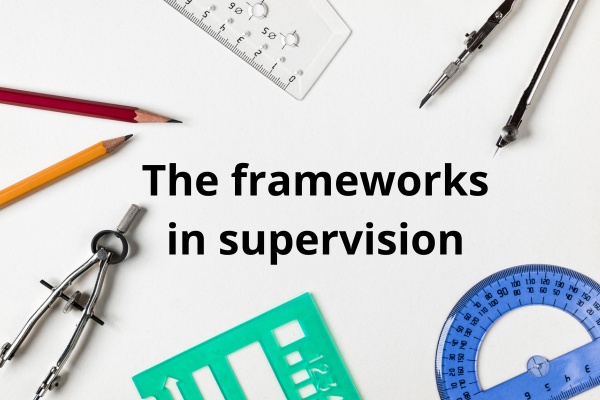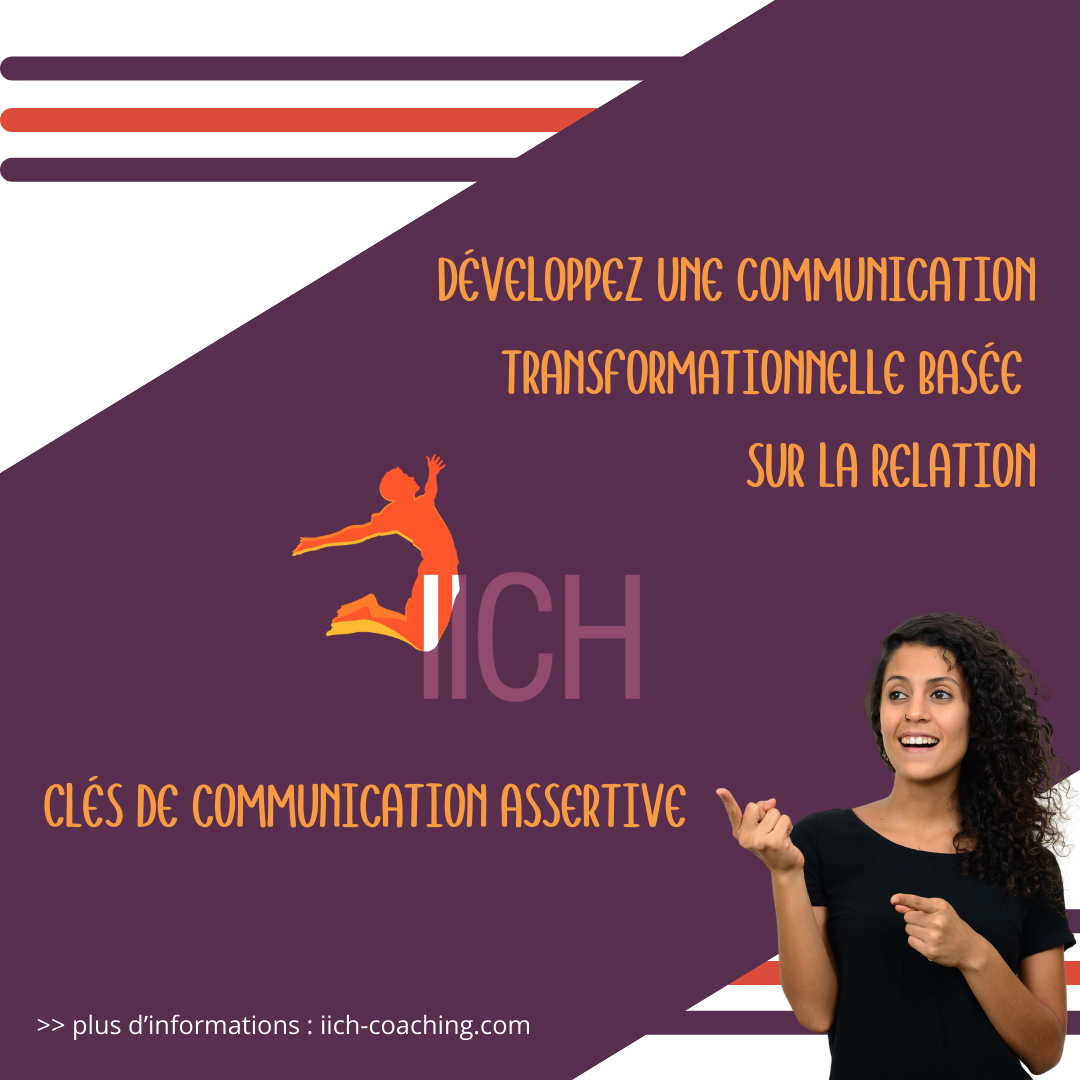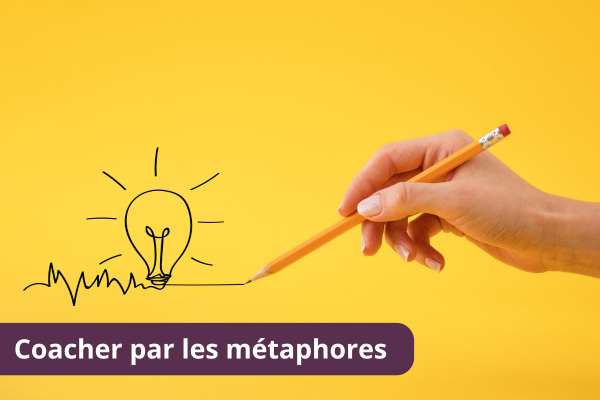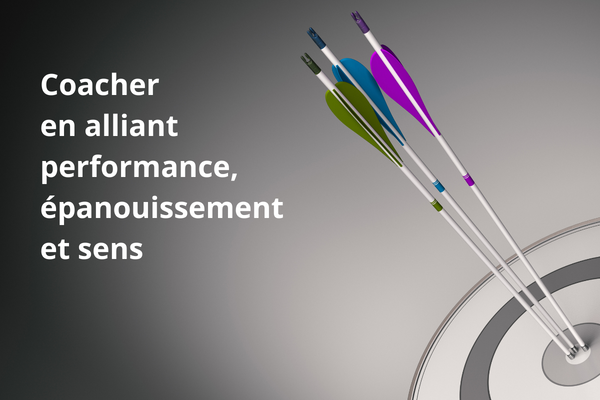It is not always easy to make a difference between mentoring and supervision. The article will clarify what is coaching, mentoring and supervision. You will understand the history of supervision and the different approaches of supervision. With this in mind, it will be easier for you to hire your supervisor.
Differences between coaching, mentoring and supervision
It is important to make a distinction between coaching ,mentoring and supervision:
- Coaching is about maximizing personal or team effectiveness. The focus is on the client.
- Mentor coaching is about providing feedback to develop capabilities and skills. The focus is on the coach.
- Supervision is about reflecting on the work of the coach is doing. The focus is on the coach and the client. To be clear, when the client is part of the conversation, it is supervision and not mentoring.

How to choose between mentor coaching and supervision?
Mentoring is mostly focused on developing the coaching skills whereas supervision is a safe and reflective space where the supervisee can embrace his/her own vulnerabilities to empowering his/her own practice and his/her clients. If you want to progress towards an ICF Credential ACC, PCC or MCC, probably the mentor coaching is the best fit for you. If you are an advanced coach that want to improve his stance in coaching through reflexivity, supervision will be the best.
If you are a french speaker, and if you want to get a deeper understanding about mentor coaching and supervision, you can access to our resources:
- Article about mentor coaching core skills
- Article about coaching supervision core skills
- Podcast about mentor coaching
- Podcast about coaching supervision
To promote reflexivity and empowerment in the coaching field, we prepared them with love and care. Enjoy lots!
History of supervision
There are 3 main phases in the supervision development:
- The first one emerged in the 1920s with psychoanalytical approach empowered by the standards of the International Psychoanalytic Society. This approach invited the practitioners to do his/her own analysis which was called the cure. At the end of the psychoanalytical cure, after a specific training, through the analysis of his transference, the applicant could become a psychoanalyst. At this time, he/she was the first supervisor. Through this period grew groups of practices.
- The second phasis started in the 1950s where counselling models were proposed including didactics and skills development.
- And, the third phase started in the 1970s, with a developmental and social role. The essence of this orientation was to establish the role and tasks of a supervisor and frame the approach of supervision to the learning stages of the supervisee.
Stages of learning in supervision
In the developmental approach of supervision, according to Robert Hogan, there are 4 stages of development of the supervisee which are:
- A stage where the supervisee tries everything. According to Stoltenberg, at this stage, the supervisee will increase his autonomy through the structured environment and framework. As an example, the supervisor is a reference. This agenda is planned. And the session, can alternate between individual and group session so as to offer the conditions to increase motivation and support. According the Ursula Delworth and Cal Stoltenberg, in this phase, the focus is mostly on the supervisee’s fears and insecurity. The core idea is to offer a secure framework to increase the confidence and the motivation to develop his/her professional practice.
- A stage where the supervisee seek autonomy but is still in conflict with a dependency to the supervisor. It is mostly connected to difficulty to find a balance between self confidence in his own practice and the responsibility connected to his work. At this stage, the supervisor will share technics and advices with the supervisee in order to create a context for skills developments. In this phase, the focus is on the emotional and the cognitive needs of the supervisee. The intention is to allow him/here to acknowledge who he/she is and see the dynamics that could appear in his/her sessions of coaching due to his personality and unfinished businesses. The supervisor will offer many questions and – though his quality of presence – he will give space for introspection. Progressively, a context of a space of reflexivity can emerge.
- A stage of mastery where the motivation is stable and the practitioner is self-confident in his abilities and professional skillset. At this stage, the supervision will take the shape of a codevelopment session based on a deep level of trust where both parts will share insights and feeling regarding the situation. At this stage, the supervisee is able to identify the impact the client problem has on him/her. He/She is able to step back to analyze their own emotions. Through time, the supervisee is able to analyze his own counter-transference.
- And the stage of the artist where the partitioner deeply expresses his professional potential through a strong commitment, creativity, and insight. At this stage, he/she is aware of his strengths and also of his/her weakness. He/She is able to embrace vulnerability as a gift for inner growth. In contact the previous stage, the supervision session will be more like a consultation – a space of dialogue and mirroring between 2 advanced professionals – that his sought when the practitioner feels the need for it. At this stage, the supervisee is able in the present to collect multiples sources of information having clarity on what belongs to him, to the supervisee, the client and its system. His stance and self-awareness are so strong that he/she can easily accept what appears in the session accepting not knowing. In such perspective, the feelings and instinctive reactions that emerges can be identified and voiced out loud to benefit the client. The supervisee is an integrated professional (coach, counselor or therapist) that have – usually – done massive amount of inner work through psychotherapy and have knowledge and skills across many different fields of expertise and practice.

According to Janine Bernard and Rodney Goodyear, the supervisor can embody 3 roles at the same time: the teacher, the counsellor and the consultant. Depending of his mastery and the needs of his/her client, the supervisor can focus on the supervisee’s intervention skills. He can conceptualize what occurs in the session to offer a deeper understanding, provoking awareness and clarity. He can tailor his approach of supervision to his/her client without being contaminated by his personal issues and counter-transference.
What are the key models in supervision?
If you read supervision books like « coaching & supervision« , you will be able to identify many different models in supervision with for example: the 3 worlds and 4 territories of Mike Mento Turner, the 7 conversations in supervision of David Clutterbuck, the several to several approach of Michel Moral, the self in supervision with the Diamond model of Katherine Long and the professional standards and ethics of David Lane but the most famous and used one is the 7 eyed-model of Peter Hawkins. It is one of my favourite as it can be easily combined with the 7 conversation of David Clutterbuck with another focus on time: before, during and after the supervision session.
This model will start with contracting through a set of questions that will give the orientation of the systemic approach of the supervisor. For example, as Hawkins suggest, the supervisor could ask:
- What is your interest for this topic today?
- What would be the outcome for the session?
- What benefit this outcome will offer to you, to your client, to the organization, and to the system itself?
The 7 eyed-model can focus on 7 orientations depending on the needs of the supervisee:
- The client’s context
- The Supervisee’s intervention
- The relationship supervisee-client
- The supervisee awareness
- The supervision relationship
- The supervisor self-reflexion
- The wider context or bigger system

This model is deep and flexible. It is a powerful tool to explore what is at stakes in the situation the supervisee brings to supervision.
What are the different approaches in supervision
There are many approaches of supervision that are mostly connected with the fields of clinical, systemic or humanistic psychology.

- The psychodynamic of Freud
This approach is focused on revealing the unconscious dynamics to allow the client to choose with more awareness. For instance, in supervision, a specific attention can be drawn to parallel processes that are usually the results of unconscious dynamics like projective identification (which is an intolerable aspect of the self and the emotion that are connected with it, projected on another person who become the recipient of the contents he/she unconsciously accepted to identify with and experience them) and the transference (which is a dynamic involving past family relationship influencing significant authority figures in the present) and counter-transference (which is the reaction of the supervisor when receiving the transference of the supervisee). Transference is a king of projection that is deeply rooted into the family history of the client. In the context of supervision, the supervisor is the recipient both of transference and projective identification. The theory helps the supervisor to navigate with unconscious defenses which are an unconscious strategy to get a sense of psychological safety in relationship with others. The aim is to protect the sense of the self-offering physical, emotional and psychological security. Their expression could be denial (through conceptualization), rationalization (avoiding to contact with emotions), idealization (through praising the hero) and projection (through expectations). Through self-reflection, listening to his intuition, and monitoring the communication of the supervisee (body language, tone of voice and words), the supervisor can identify what is at stakes below the surface of the conversation and can identify the best strategy to raise the awareness of his/her client.
- The gestalt of Fritz Perls:
Gestalt approach was founded by Fritz Perls. It is a phenomenological approach that is focused of creativity, working with the emotional field and the embodiment, and the language. The main interest is connected with the way the client interacts with others. There are core concept like the contact frontier (which is the limit between the self and others), the confluence (which means merging and is a contact style where there are no boundaries, and no sense of differentiation between ourselves and others), projection (which is denying an repressing a quality of feeling attributing it to others) and transference (which is defined as the way the supervisee organize his/her thoughts through the lenses of his/her own history, key figures, and patterns of behaviors and unfinished businesses rather that what is real in the present). These dynamics can lead to disruptive relationships or co-dependency. This map can help the supervisor to identify the kind of attachment the supervisee has developed and how it impacts his/her relationships in the present (through imagining what a person thinks, bringing back contents in the present, making assumptions, and offering feedbacks). The core idea is to raise awareness of the client to help him/her to lead better with reality in the present. More than a methodology, it is a stance in life that invites the practitioner to investigate reality with a curious and open mind. There are 3 ways to be in service of the client 1. Meeting the clients where they are which means leaving judgments, interpretations and ideas 2. Describing which is acknowledging what is, noticing and voicing it so create co-responsibility 3. Equalizing which is a way to welcome and treat all the information we receive with the same value and consideration. Because of the specific framework of supervision, the supervisee will discuss of a person that is not in the room, which means that is not present in the here and now. Listening to the “embodied talk” of the supervisee, the supervisor will facilitate the exploration of multiple fields (like supervisor-supervisee, supervisee-client or client-system)
- The person-centered approach of Carl Rogers
This humanistic approach was founded by Carl Rogers. The core idea is to actualize the innate potential of the client through the coaching relationship. The special relationship is based on 6 conditions: 1. A physical contact based on awareness 2. The client congruence 3. The congruence of the practitioner 4. An unconditional positive regard 5. Empathetic understanding 6. The perception of the client with unconditional positive regard and empathy. This approach will help the supervisor to create an alliance with the supervisee with deep foundations of trust and safety.
- Transactional Analysis of Eric Berne
Transactional Analysis is a famous framework founded by Eric Berne. It offers a grid to analyze our stance in relationship with others through the focus of transactional estates: Parents (normative / nourisher) Child (Adapted rebel or Submissive) and Adult. It described 5 Drivers that influence our lives: 1. Be perfect 2. Be Strong 3. Hurry up 4. Please others 5. Make efforts and different life scenarios that can be like a script for our life stories. The triangle of Karpman can be considered as a declination of Berne’s theory. It reveals the dynamics between 3 parties that be turn by turn Tyrant, Victim and Savior. Being aware of our preferences and of these aspects in every relationship will help us to broaden our views and option to take back our responsibility and reveal our potential.
- The organizational psychology
This approach is really useful to uncover dynamics happening in organization. For instance, Lee Bolman and Terrence Deal, describe a model based on 4 characteristics:
1. The structural Frame (which is called the Factory) : Its aim is to reduce unpredictability through measure, qualifying and defining workflows, authorities, chains of commands, and coordinated teams to achieve goals. In such perspective, the problems are solved by restructuring.
2. The Human Resources Frame (which is called the family) : It is focused on the needs and feelings of the people working within the organization. The idea is to promote a management that is engaging and motivating to value performance but also fulfilment and a sense of purpose.
3. The political frame (that is called the jungle) : It is focused on the dynamics of power within the organization and the decision process. This power can be hierarchical but also transversal through different kinds of leadership. In such perspective, conflicts within an organization are perceived like a failure attempt to help the organizational growth. The best internal coalitions are the ones that offer the ability for the organization to reach tits goals and grow. The mapping of the power structure helps to identify the sources of power and its distribution and use. Then, it is easier to get clarity on a situation.
4. The symbolic frame (that is called temple and carnivals): It is focused the interpretation of the organizational history. The idea is to understand and map the culture of the organization which encompasses unconsciously shares values and beliefs, myths, ideologies, vision, customs that influence the way we do things. In such perspective, stories encompass values of the organizations. A culture is based on shared values and beliefs, rituals, heroes-leaders and symbols. The supervisor will focus his attention on the identity of the organization to understand what give meaning to the persons who belongs to it. This symbolic frame influences the mindset of the people who belong to the organization and its stakeholders.
Being able to analyze what is a stake within these 4 perspectives will allow the supervisor and its client to discover new interpretation of the situation and situations to solving the problems. For exemple, the supervisor could ask a set of question to clarify the orientation of the supervision session : 1. What is your preferred framework to think about the internal issue? 2. What about the organization preference? 3. Which one would be the most useful to clarify the situation?
- The systemic approach
The systemic approach is probably the most powerful approach. Based on the work of the Palo Alto’s school with founders like Gregory Bateson, Milton Erickson, Fritz Perls, Virginia Satir, Paul Watzlawick, this approach focuses on the way we communicate within a system. Many different techniques were developed like NLP, Strategic therapy, Hypnosis or Systemic constellations. It investigates what is at stakes in organizational patterns. The core idea is to understand how we interact within a system and make a change to release the potential of the system. The aim of the supervisor is not serving he supervisee’s growth and its client but also the wider system.
What is the best approach?
It is the one which matches the needs of the supervisee. It can be highly valuable to hire a supervisor that can navigate between different frameworks in supervision.
How to choose your supervisor?
It is not easy to choose a supervisor. I will do my best to help you in this reseach defining his core qualities. To be in service of the relationship, the supervisor’s qualities might be empathy, acceptance, openness to confrontation, flexibility, sense of humor and appropriate self-disclosure when useful to the client.
Here are a few questions to help you choosing your supervisor:
- Were you at ease in his/her presence?
- Did you get the idea that you could learn from him/her?
- Do you feel respect or inspiration with him/her?
- Can you be fully yourself with him/her?
- Did you feel secure enough to be vulnerable?
- Do you share the same values?
- Did he/she answer your question with an open mindset?
If you are a french speaker, you can read our article and download our synthesis
Reading as a way to explore and deepen your skills
If we already connected or discussed together, you might know that I am an eternal learner and that I read a lot. For instance, to write this article, I deepen my knowledge into many books. I will offer some references below. For example the book « Coaching & Mentoring Supervision » definitely helped me to remind me the origin of supervision and different stages of learning. Going through the different approach and models, it raises awareness about the different frameworks and the way to communicate about them in a supervision setting. I really liked the book. With the book « Reframing Organization« , I really liked deepening my understanding of the organizational frames. It helped me to consolidate what I know as a mentor coach and supervisor. If you are into deepening your own practice as a coach, a mentor or a supervisor, I would deeply recommend the books mentioned below.
Books references:
- Coaching & Mentoring Supervision by Tatiana Bachkirova, Peter Jackson and David Clutterbuck
- Fundamentals of Clinical Supervision by Janine Bernard and Rodney Goodyear
- Reframing Organization by Lee Bolman and Terrence Deal
- Supervision in the helping profession by Peter Hawkins and Robin Shohet,
- Supervision and its vicissitudes by Brian Martindale, Margareta Morner, Maria Rodriguez and Jean-Pierre Vidit
- Supervising Counselors and Therapists: A Developmental Approach by Ursula Delworth and Cal Stoltenberg
- Coaching, Mentoring and Organizational Consultancy by Peter Hawkins and Nick Smith










